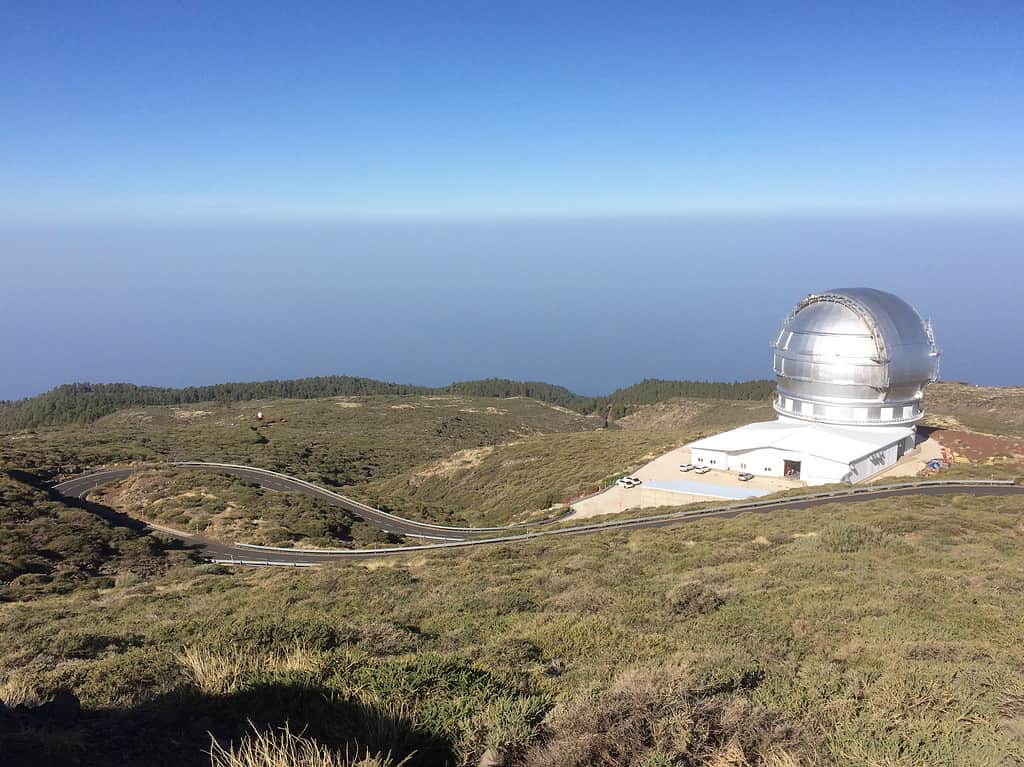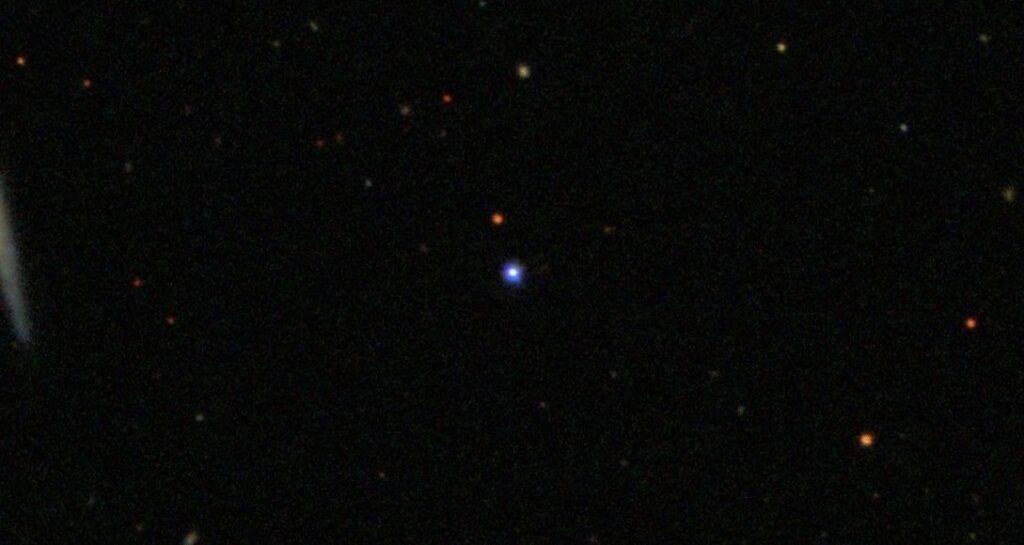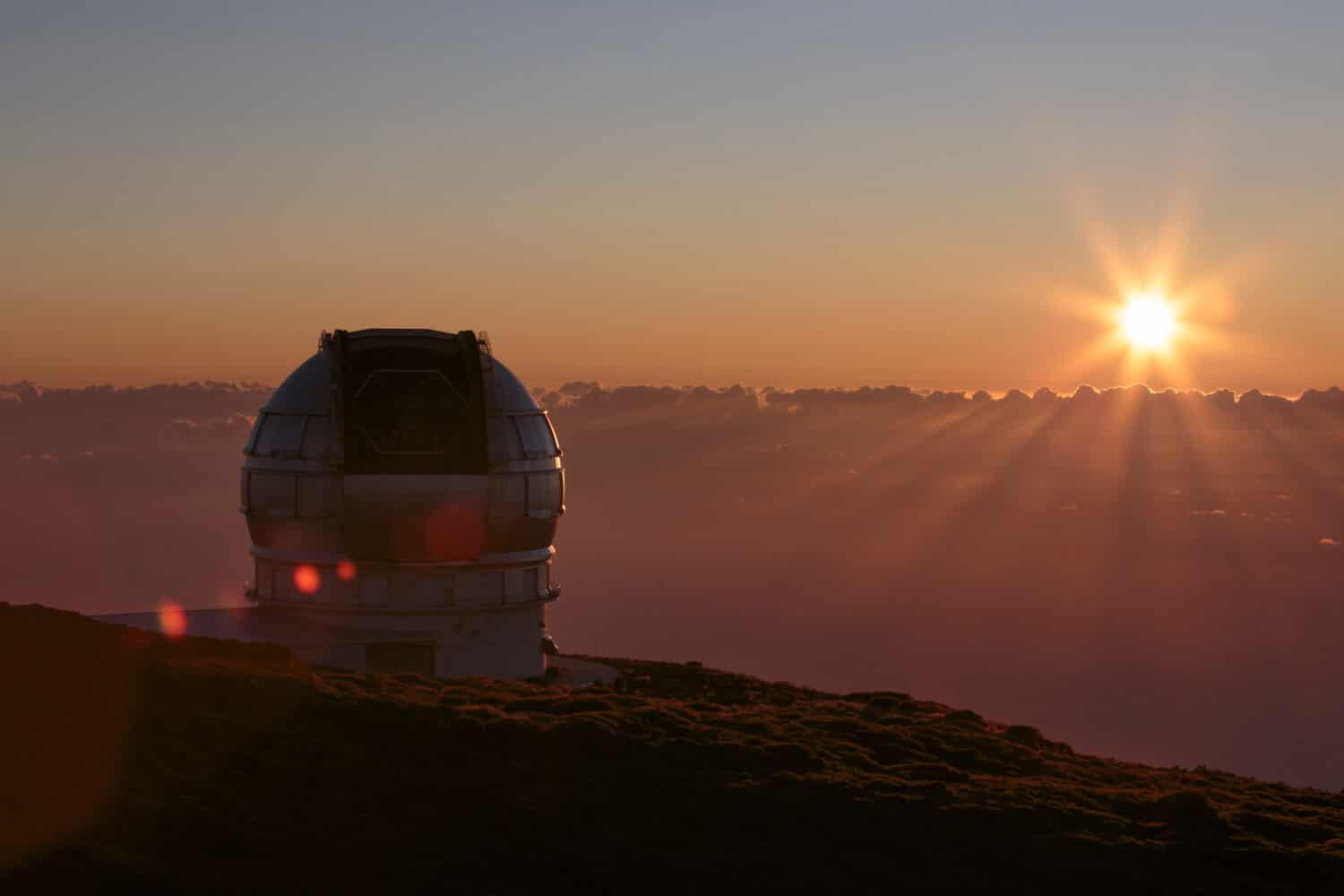Gazing up at the heavens has long captured the minds of scientists, poets, and just about anyone who pauses to look at the stars. Thanks to advances in technology over hundreds of years, we can see further into space than ever before and learn more about everything from distant stars to nearby planets in our own solar system.
The largest optical telescope on Earth is at the Gran Canarias Observatory on La Palma in Spain’s Canary Islands. The telescope is commonly called GTC, which stands for Gran Telescopio Canarias.
How Big Is The Telescope?
The GTC has a mirror that is 10.4 meters (34.1 feet) wide in diameter. It is circular and has an overall collecting area of 75.7 square meters, although the effective area is slightly less. Telescopes use mirrors to bounce light to the eyepiece. This is what allows the observer to see stars, planets, and other things in the night sky with greater detail than with the naked eye. But the eyepiece on large telescopes like the GTC is not as simple as one that you would put your eye up to in a household telescope. Instead, it uses a complex system to collect light via the mirror, adjust for the rotation of the earth, and collect images and data. The telescope is used and adjusted in a control room, although many of the instruments do things automatically.

The steel support structure is a critical part of the Gran Telescopio Canarias (GTC).
©barmalini/Shutterstock.com
How Does The Telescope Work?
The extra large collection surface is one of the key features that allow this telescope to see things that are so far away. The mirror in the GTC is actually made of 36 separate pieces. Programs adjust these individually, one key way that the telescope accounts for the atmosphere. They create one large mirror that functions just like the mirrors in a smaller telescope, although on a much larger and more detailed scale. Things like temperature, humidity, and other factors can impact the results of the telescope. By designing a mirror that can adapt to even small differences in the environment, the telescope is able to get amazing images. Known as “adaptive optics,” this new technology uses slight adjustments and corrections. These occur as fast as 1000 times per second in some scenarios.
There are also a lot of scientific instruments that support the telescope. These collect data and make the fine-tuned adjustments needed to get the best results. There is a steel mount that keeps the telescope steady, an important consideration. But the telescope does not remain still. Instead, it has to be able to rotate on both the horizontal and vertical axis to account for the movement of the Earth. These calculations are incredibly precise so that the telescope can get the best and most accurate images.
Where Is The Telescope?
The GTC is located in La Palma, one of the Canary Islands. It is located in the Northern Atlantic Ocean. Designers chose this site due to its extremely low light pollution. When observing the night sky, light from nearby cities can impact the ability of the telescope to capture the light of distant objects in the night sky. This is why most telescopes are set up as far away from populated areas as they can be. For a large undertaking like building the largest telescope on Earth, finding the right location was key.
The Observatorio del Roque de Los Muchachos in La Palma was the perfect place. The observatory is around 2400 meters or 7874 feet above sea level. It is right next to Taburiente National Park. Not only is the light pollution exceptionally low in this area, but it is also in a good position relative to the night sky for scientific research. In fact, there are 20 other telescopes and astronomical instruments in addition to the GTC. They all serve different purposes to learn more about space.
If you want to learn more about the GTC, schedule a visit to the observatory. Part of their work focuses on public outreach and making their research accessible. Tours begin at the Visitor’s Center and last around one and a half hours. Visitors are led through the facility by a trained “Starlight guide,” who points out interesting things to see and learn. You do need to reserve in advance. Other specialized tours are available for school and education-related groups as well as media. There are even some research opportunities for those specializing in astronomy or one of the related fields.

The largest optical telescope on Earth is at the Gran Canarias Observatory La Palma, Spain.
©iStock.com/Nickos
How Long Did It Take To Build The Telescope?
It took seven years and numerous tests to get the GTC up and running. Large projects like this one are often a combined effort from multiple research organizations. In this case, four key organizations developed the GTC. These are the Institute of Astrophysics of the Canary Islands, the National Autonomous University of Mexico, the National Institute of Astrophysics, Optics, and Electronics of Mexico, and the University of Florida. This group continues to maintain and run the GTC.
Construction at the site began in 2000 and the telescope was first used on July 14, 2007 in a “First Light Ceremony.” Research using the telescope began in 2009 after final testing, adjustments, and installation of scientific equipment.

Ton 618 is the largest black hole known.
©Sloan Digital Sky Survey, Apache Point Observatory, Astrophysical Research Consortium / Creative Commons – Original / License
What Is The Gran Telescopio Canarias Used For?
Because of its design, the GTC is able to get crystal clear images from very, very far away. The observatory states that it can “distinguish car headlights some 20,000 km away, or at the distance that separates Spain from Australia.” Of course, that is not the telescope’s job. But it can be helpful to put things in perspective. They have also compared the viewing power of the GTC to the collective power of “4 million human eyes.”
Like most large telescopes, the GTC detects very far-away objects in space. These can include stars, planets, galaxies, black holes, and numerous other discoveries. For some frame of reference, the furthest visible objects in space are roughly 13 billion lightyears away. These were seen by the Hubble Space Telescope.
According to the observatory, the GTC is key in learning more about “the nature of black holes, the formation history of stars and galaxies in the early universe, the physics of distant planets around other stars, and the nature of dark matter and dark energy in the universe.” Sounds like a good job for such a large and powerful telescope.
Thank you for reading! Have some feedback for us? Contact the AZ Animals editorial team.








